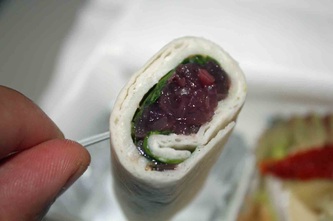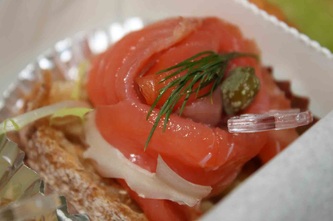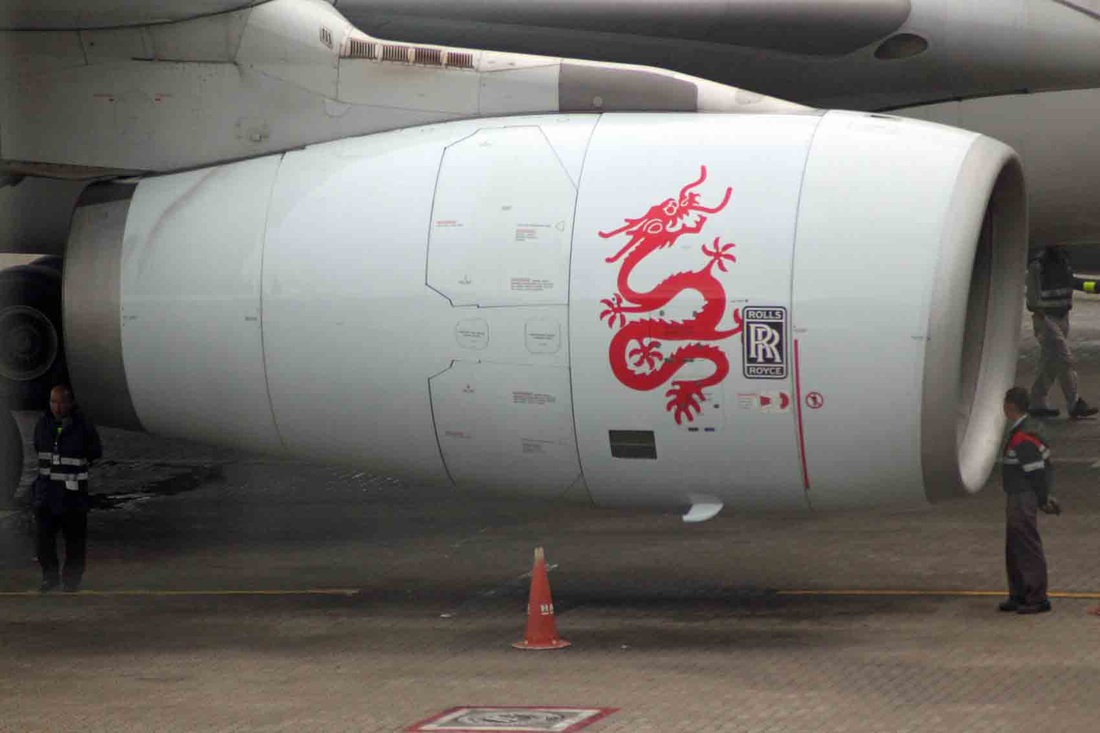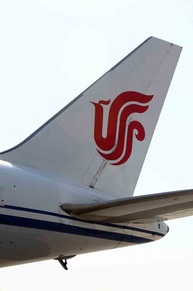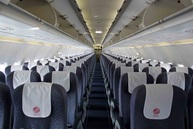DRAGONAIR (Hong Kong International to Guangzhou Baiyun Airport, AIRBUS A330-300, BUSINESS CLASS12/16/2012
Dragonair is an award-winning regional airline of Hong Kong, and is a proud wholly owned subsidiary of the Cathay Pacific Airways Group. Formed in May 1985, and having started services initially with just one Boeing 737-200 aircraft, Dragonair has in time become one of the world’s best regional airlines.
As a wholly owned subsidiary of Cathay Pacific Airways, the airline operates one of the youngest and most modern fleet with 36 aircraft on scheduled services to 41 destinations in Mainland China and elsewhere in Asia using three aircraft types: Airbus A330-330, Airbus A320-200, and the Airbus A321-200. The Airbus A330-300 aircraft come in three types of configuration: type 1 aircraft are designed to carry up to 284 passengers in three classes. They are used on the Beijing and Shanghai routes; type 2 aircraft are designed to carry up to 315 passengers in two classes. They are used on the Kaohsiung and Taipei routes; and type 3 aircraft are designed to carry up to 300 passengers in two classes. They are used on the Dhaka, Bengaluru (Bangalore), Taipei, Kaohsiung and Qingdao routes. Cathay Pacific is a founding member of the Oneworld alliance, with its subsidiary, Dragonair, as an affiliate member. In 2011, Dragonair was voted the ‘World’s Best Regional Airline’ by Skytrax for the second consecutive year. The airline is renowned as a China expert, serving 20 cities in mainland China. Though the Hong Kong to Guangzhou route is only 30 minutes (can sometimes take around an hour depending on the air traffic), this route provides many connecting flights from Hong Kong to around the world with Cathay Pacific Airways or Dragonair. Guangzhou is home to millions of wealthy overseas Chinese diasporas (i.e. Canadian-Chinese, British-Chinese, Australian-Chinese, American-Chinese etc.), and so the Dragonair flight between Hong Kong and Guangzhou provides excellent and smooth connections, without the hassle of these passengers having to take hours to travel by train or bus first (and saves the headache of crossing the Hong Kong - Shenzhen border). Usually when I have flown between London and Hong Kong, I have flown directly to Hong Kong (except one time in 2004 when I did take a connecting flight from Hong Kong to Guangzhou with China Southern Airlines on their old Boeing 757-200). I was flying from London Heathrow to Guangzhou with Cathay Pacific Airways, and so I decided to take advantage of this useful connecting flight from Hong Kong and Guangzhou. It turned out to be much better than I expected. If anyone is flying from London (or other destinations around the world with Dragonair or Cathay Pacific Airways) to Guangzhou then I would highly recommend this connection because the quality of comfort, service, and the professionalism of the staff is one of the best in the world. Check it out: Departure date and time of flight: November 2012, 08:00am Flight number: KA782 ATC Callsign: Dragon Flight duration: 35 minutes Class: BUSINESS CLASS Aircraft type: Airbus A330-342 (17 aircraft of this type in service- although only 5 of those aircraft have a configuration same as this aircraft.) Aircraft registration: B-HLB Aircraft Serial Number: 83 First flight: 9th February 1995 (nearly 18 years old!) Aircraft delivery date: 1st March 2011 (aircraft was previously with Cathay Pacific Airways since 1995) Aircraft engine types: 2 x Rolls Royce Trent 772-60 Frequent flyer programme: Marco Polo Club Seat configuration for this aircraft: 44 business class in a 2-2-2 configuration 267 economy class in a 2-4-2 configuration Punctuality of the flight/route taken: Departed on time, and landed on time as well. The short flight of around 73 miles provides a very non-scenic route from Hong Kong to Guangzhou because of the dusty and cloudy skies over Guangdong province. The flight leaves Hong Kong, and goes over Zhuhai, Dongguan, and then straight down towards Guangzhou approach (landing from either the city side, or the Baiyun mountainside). For this short flight, we climbed to 23,000 feet within 10 minutes, and then started the decent soon afterwards. Lounge experience at Hong Kong Airport: Cathay Pacific Airways, and Dragonair have 5 lounges at Hong Kong Chep Lap Kok Airport for their First and Business Class passengers. They are: The Wing The Pier The Cabin The Arrival G16 Lounge As I arrived at gate 16 from my London flight, the nearest lounge that I could refresh myself at was the G16 Lounge. Like all of the other lounges, the lounge is on the 2nd floor, well placed like a gallery from where you can get panoramic views across to the airfield, and the gates. The G16 lounge houses nice showers, comfy sofas, and delicious food all throughout the day and night. There is no harm tucking into one of the best-made Cumberland sausages and Heinz baked beans after a 12-hour flight. Cathay Pacific Airways and Dragonair have made their lounges very welcoming and comfortable, and they do feed you well (so therefore, there is no need to run to the nearest MacDonald’s after you land at Hong Kong!). G16 lounge is mostly catered towards passengers flying with Dragonair, and that’s one of the reasons why the furniture also comes in lovely shades of imperial red or creamy yellow leather. Any baggage issues: No issues. Comments on the check-in staff and any issues: I landed into Hong Kong from London Heathrow on Cathay Pacific Airways flight CX252 at around 6.45am. We docked at gate 16, and my onward connecting flight to Guangzhou was at 8am from gate 61 (which is around twenty minutes from gate 16- quite a walk!). There was no need to check-in, but all connecting passengers are smoothly ushered through a separate security channels. The Automated People Mover (APM) takes passengers between gates 20 and 40 quickly and smoothly. The whole journey from the G16 Lounge to gate 61 took around 15 minutes at the most. In-flight magazine: Silkroad (published by ACP Magazines Asia Limited) Comments regarding the pre-meal service: Business Class passengers were offered a choice of champagne, orange juice, tomato juice, and apple juice out of a hand tray service provided by the crew members. A choice of either sparkling or still mineral water is also offered. There is a 500mL bottle of Evian water behind each Business Class seat. The signature drink to try is the ‘Dragon Sunrise’- a refreshing fusion of gin with fresh guava, and fresh lemon juice. All Business Class passengers are handed out hot hand towels just prior to the meal service. The towels have a lemon scent. Comments regarding the first meal: For such a short flight, there is no formal meal service. It only takes around 10 minutes after take-off before the Captain announces that we are going to commence the decent into Guangzhou! Dragonair offer scrumptious onboard menu choices that are changed every two weeks. Business Class passengers are presented a box containing four types of assorted cold canapés and fresh fruit. On this flight, my box contained: · Smoked salmon and cream cheese · Pork pastrami tortilla wrap · Artichoke and brie · Fresh fruit (cute slices of strawberry, mango, watermelon, and melon) Though not required for such a short flight, food is usually served on stylish china tableware specially adapted from the Lifestyle collection of Wedgwood from the UK. To enjoy the food at its freshest, it’s best to consume it before landing. Comments regarding the drinks service: A second round of drinks was offered after the meal. This included 12 kinds of coffee and tea should be enough to make anyone spoilt for choice. Should any passenger want wine or champagne (even if it is the morning!), then these drinks are served in exclusively designed glassware. The champagne is provided by the award-winning Piper-Heidsieck Brut. The wine list for this flight included: White Wines: Macon Villages Blanc, Vaucher Pere & Fils, Burgundy 2010, France Wente Morning Fog Chardonnay, Livermore Valley & San Francisco, California 201, U.S.A. Red Wines: Cotes de Duras, Baron de Venzac 2012, France Luis Felipe Edwards, Family Selection, Gran Reserva, Shiraz 2012, Chile. Some of the specialties on Dragonair include: Fook Ming Tong Chinese tea, Fujian first class oolong tea, Hong Kong style milk tea, Fuding jasmine silver fur tea, and freshly brewed coffee. Comments on the in-flight system (if any): Each seat features a 10.4" personal video screen (same size in both Economy and Business Class cabins). Each flight has a choice of 10 PTV video channels and 16 audio channels from Dragon On Air in-flight entertainment programming. However, on such a short flight, there was hardly any need to watch any programs, except for the moving map which is also displayed on the huge screen at the front of the cabin. The playback music that welcomes passengers while on boarding and while disembarking the aircraft changes every month. For this particular flight we had ‘Dance on the Moon’ by Patrick Kelly (on boarding), and ‘Dream of the Pink Zebra’ by Suzanne Ciani; Young Russia Orchestra. It's a much better selection than what you get on the majority of the airlines in mainland China (which is usually having to listen to Kenny G's 'Going Home). Nothing against Kenny G, and nothing against his music, but do you really want to listen to just ONE tune every-time a plane lands and take-offs, and on every flight?! All aircraft have the Airbus KID 110V AC SkyPower in-seat power outlet for laptop computer and portable electronic devices in every seat. This requires no adapter cable. Dragonair was the first airline to offer this technology within the operational network for mainland China. Comments of professionalism of the cabin crew: The staff are very proud of their brand image and represented their airline at the highest level possible. When under a situation of high pressure, the staff seemed to act with professionalism and integrity. The cabin crew uniform design consists of a black blouse with thin red stripes, and a neck silk scarf in navy blue and red colours. Dragonair's current uniforms are designed by renowned Hong Kong designer, Eddie Lau. Comments on the interior of the aircraft (including seat comfort): For A330-300 on which I was flying, the Business Class cabin accommodates 44 passengers in a 2-2-2 seat design while Economy Class cabin caters for 267 passengers in a 2-4-2 setting. The seats in Economy Class on the Airbus A330-300 have a pitch of 32” recline, and are 17.5” wide. The seats in Business and Economy class are manufactured by various suppliers: BE aerospace, Zodiac France, Geven aircraft seating, Recaro Aircraft Seating, while those in first class are manufactured by Zodiac. Business Class seats on the Airbus A330-300 have a pitch of 63” recline (flatbed), and are 26.5” wide. The minimum in-flight sleeping angle is of 6.8° (when airborne). Each seat has an extendable leg rest, and a footrest, as well as a six-way adjustable headrest. The Business Class seat is ergonomically designed to be comfortable whether the passenger is working or relaxing. The Business Class cabin is upholstered in a refreshing and contemporary aqua blue; while the Economy Class is upholstered in shades of aqua blue, imperial red, and sky blue. Dragonair logo and brand livery Dragonair’s livery consists of having an all white fuselage, and underbelly. The tailfin consists of a imperial red dragon against a white background, and the same design is applied to the engines. At the front of the fuselage, just before the first cabin door, and below the cabin windows the words ‘DRAGONAIR’ are printed in English, in black ink and in capital letters; while the Chinese equivalent is printed in imperial red ink, and above the cabin windows (above the English words). The tips of the wings are coloured in imperial red ink. Below the tailfin, just in front of the back cabin door, is the flag of the Swire Group. The current Dragonair logo, modified from the previous version, was introduced in 1993 coinciding with the delivery of Dragonair's new fleet of Airbus A320s back then, with a new livery. The livery design gives a streamlined and contemporary look that reflects the dynamism and energy of the airline. Aircraft are given a pristine, overall white look, with the Dragonair name in clean black lettering. Red is used in the Chinese version of the name and in the dragon motif, in a strong and sophisticated shade. The cabin crew uniform design consists of a black blouse with thin red stripes, and a neck silk scarf in navy blue and red colours. While Dragonair has been a wholly owned by the Cathay Pacific Group since September 2006, the airline continues to operate as a separate airline under its own Air Operator’s Certificate. The Dragonair brand remains unchanged and the airline’s own 2,400 staff consisting of cockpit and cabin crew fly its own aircraft in the existing livery. In 2010, Dragonair celebrated its 25th anniversary, and to mark the auspicious occasion, an Airbus A330-300 was painted in a special livery with the red dragon painted across the whole fuselage against a backdrop of Hong Kong’s skyline in green. Just under the cockpit windows it writes ‘Hong Kong’ in capital letters, and there is a painting of the famous Hong Kong Star Ferry. Comments are closed.
|
About Airline PRThis is a special section on Airline Branding, and Airline Public Relations written by me on all the flights I have been fortunate enough to have been on. These are not records taken from somewhere else, but are actual flights I have been on. Most of the flight trips are officially sponsored by the airline companies in order to promote their certain routes, and aircraft. Airline promotion and PR related work in the aviation industry is one of my expertise. Watch exclusive videos below taken in the cockpit of a Boeing 777-300ER in-flight over Chinese Airspace.
Special thanks goes to Turkish Airlines B777-300ER Cockpit Video 1B777-300ER Cockpit Video 2Archives
March 2024
Airlines Reviewed
All
Proud media partner of QATAR AIRWAYS |







